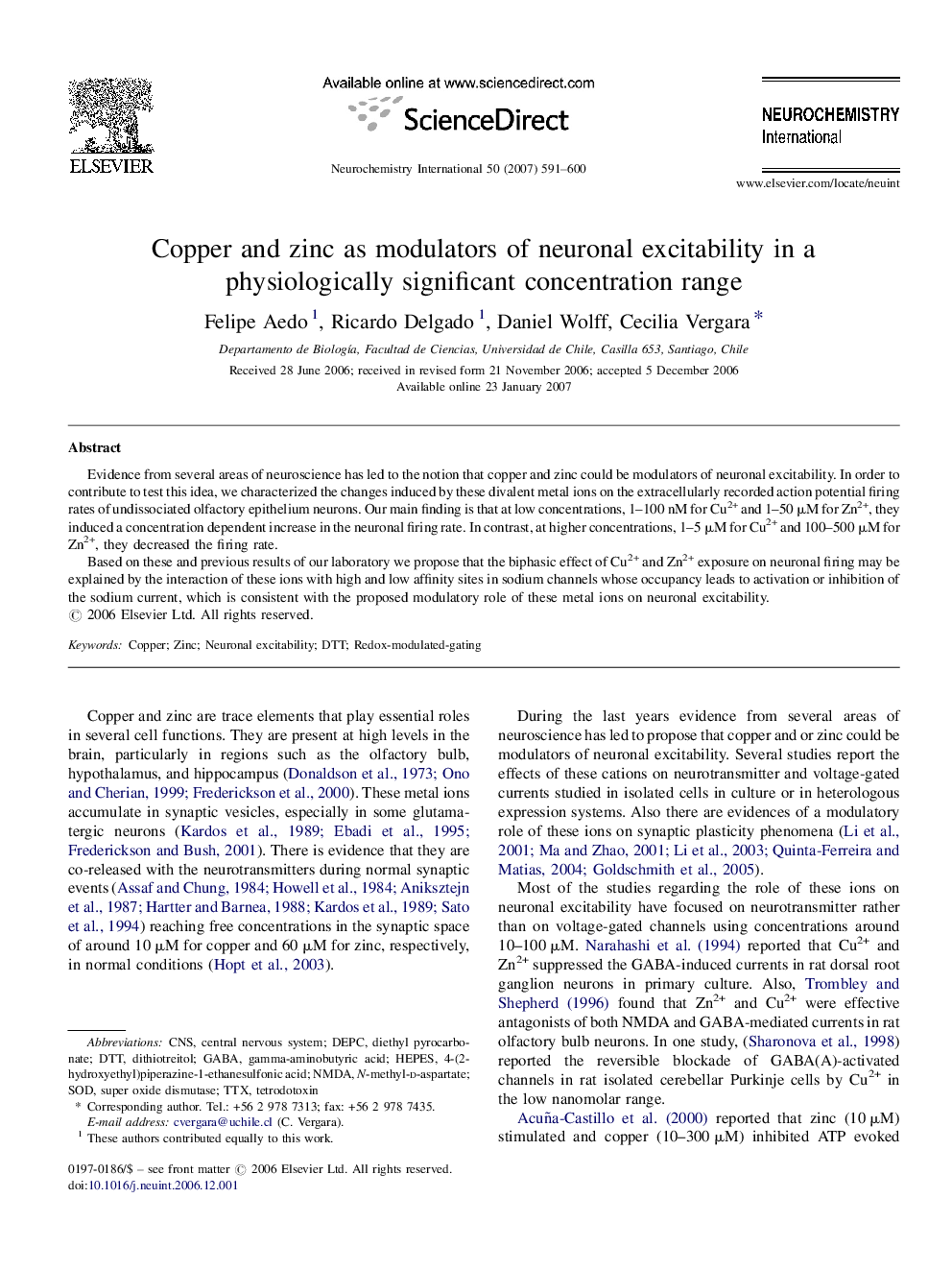| Article ID | Journal | Published Year | Pages | File Type |
|---|---|---|---|---|
| 2201643 | Neurochemistry International | 2007 | 10 Pages |
Evidence from several areas of neuroscience has led to the notion that copper and zinc could be modulators of neuronal excitability. In order to contribute to test this idea, we characterized the changes induced by these divalent metal ions on the extracellularly recorded action potential firing rates of undissociated olfactory epithelium neurons. Our main finding is that at low concentrations, 1–100 nM for Cu2+ and 1–50 μM for Zn2+, they induced a concentration dependent increase in the neuronal firing rate. In contrast, at higher concentrations, 1–5 μM for Cu2+ and 100–500 μM for Zn2+, they decreased the firing rate.Based on these and previous results of our laboratory we propose that the biphasic effect of Cu2+ and Zn2+ exposure on neuronal firing may be explained by the interaction of these ions with high and low affinity sites in sodium channels whose occupancy leads to activation or inhibition of the sodium current, which is consistent with the proposed modulatory role of these metal ions on neuronal excitability.
